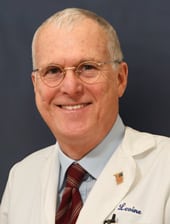Because of the interdisciplinary nature of wound care, communication is critical to maintain the process of healing. This applies to all types of chronic wounds including pressure ulcers and ulcers related to arterial and venous disease. There are several avenues of communication for wound care, all of which require effort to maintain optimum transfer of information. This effort includes continuing education of caregivers and patients, and may require review of institutional policies and procedures to optimize flow of information.
1) Caregiver to patient or family
 For patients at risk for pressure ulcers, they and their families require instruction regarding prevention modalities. This includes education on appropriate pressure redistribution surfaces and mobilization techniques. Patients and families require immediate notification whenever a pressure ulcer occurs. For patients being discharged, or for those who reside in the community, they require education on wound care including pressure relief, dressing changes, and nutrition.
For patients at risk for pressure ulcers, they and their families require instruction regarding prevention modalities. This includes education on appropriate pressure redistribution surfaces and mobilization techniques. Patients and families require immediate notification whenever a pressure ulcer occurs. For patients being discharged, or for those who reside in the community, they require education on wound care including pressure relief, dressing changes, and nutrition.
2) Patient or family to caregiver
If patients have questions about a wound or any aspect of wound care, they should be provided with a contact number for a caregiver who is knowledgeable and available. If a new wound occurs, or if an existing wound deteriorates, patients should be instructed to immediately notify their caregiver. New or deteriorated wounds can herald new or worsening underlying medical problem that requires investigation.
3) Nurse to Physician
Nurses and physicians are often locked within their respective silos and sometimes do not communicate critical concerns. Physicians need to be aware of any deterioration in skin condition. Some skin problems such as moisture associated dermatitis and stages 1 and 2 pressure ulcers are not communicated to the physician because they require nursing interventions only according to the facility’s policies. It is a mistake, however, not to notify the physician about these changes. Any deteriorating ulcer in any location, or new wound of the lower extremity requires prompt physician examination.
4) Physician to Physician
Skin is a major organ, and pathologic conditions regarding skin should be documented and communicated between doctors along with any other medical concern. Skin care has often been delegated to nurses, a philosophy that is no longer applicable in today’s risk-management and patient-centered environment. Different medical specialties may have alternative views on issues such as wound classification and treatment, and these should be openly discussed to facilitate the best collaborative approach to wound healing. Discharge summaries are critical documents that physicians rely upon for comprehensive information on a hospital stay, yet they often lack information on wounds and wound-care. If a patient develops a wound during a hospital stay, this should be listed as a problem in the discharge summary along with treatments in progress.
5) Facility to facility
Information concerning wound documentation and treatment must accompany the patient when they travel across the healthcare continuum. When a patient is transferred between facilities it is critical that accurate wound documentation accompany the patient. The risk-management environment has brought attention to documentation discrepancies between hospitals and nursing homes, which may reflect directly on quality related issues. Patients should have a total skin assessment when they leave a facility, and when they arrive at the next facility. This also applies to the visiting nurse who begins a course of home services. This enables caregivers to be on top of critical issues such as obtaining proper prevention devices and promptly continuing the appropriate treatments.
* * * * * * * * * * * * * * * *
